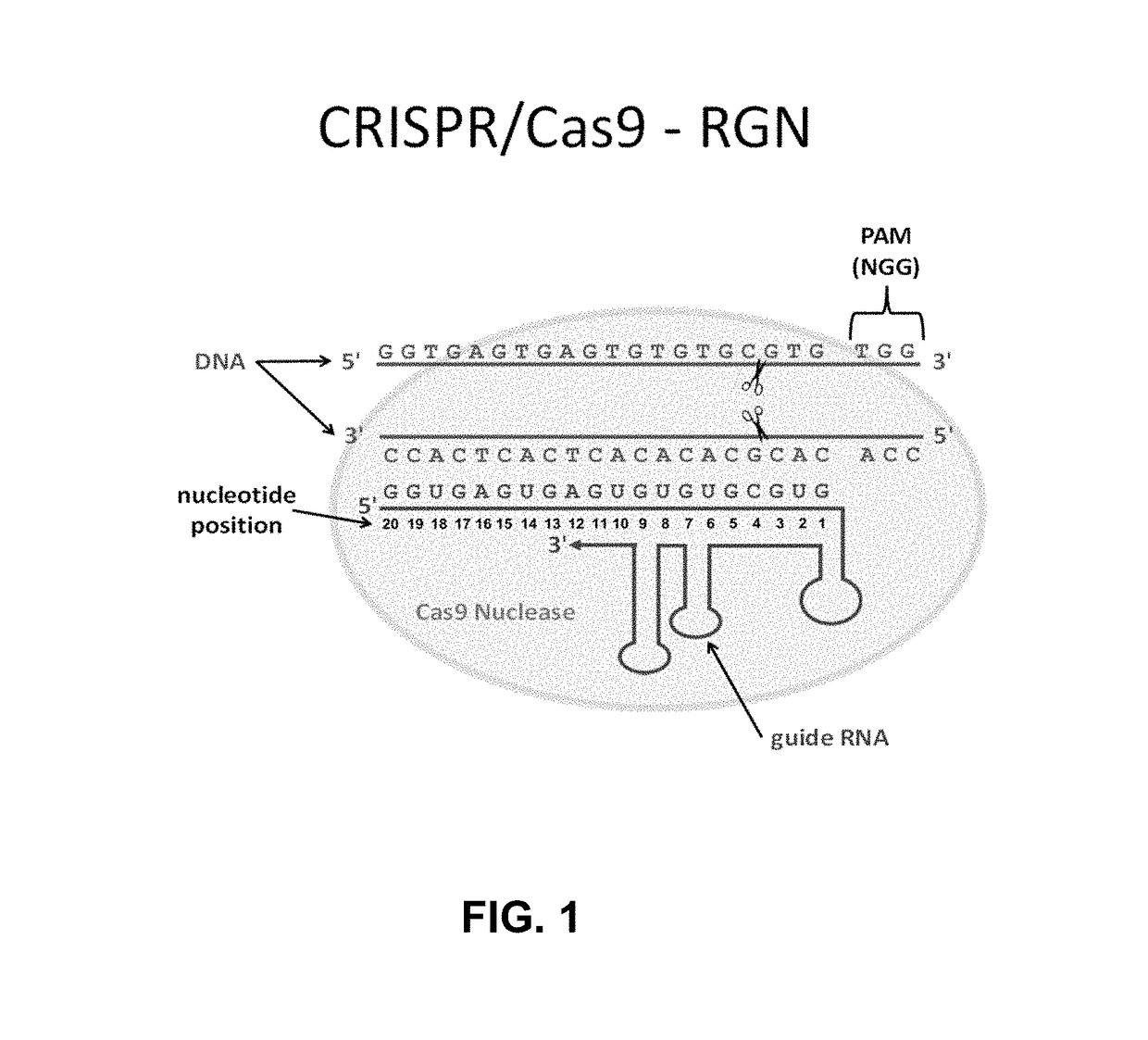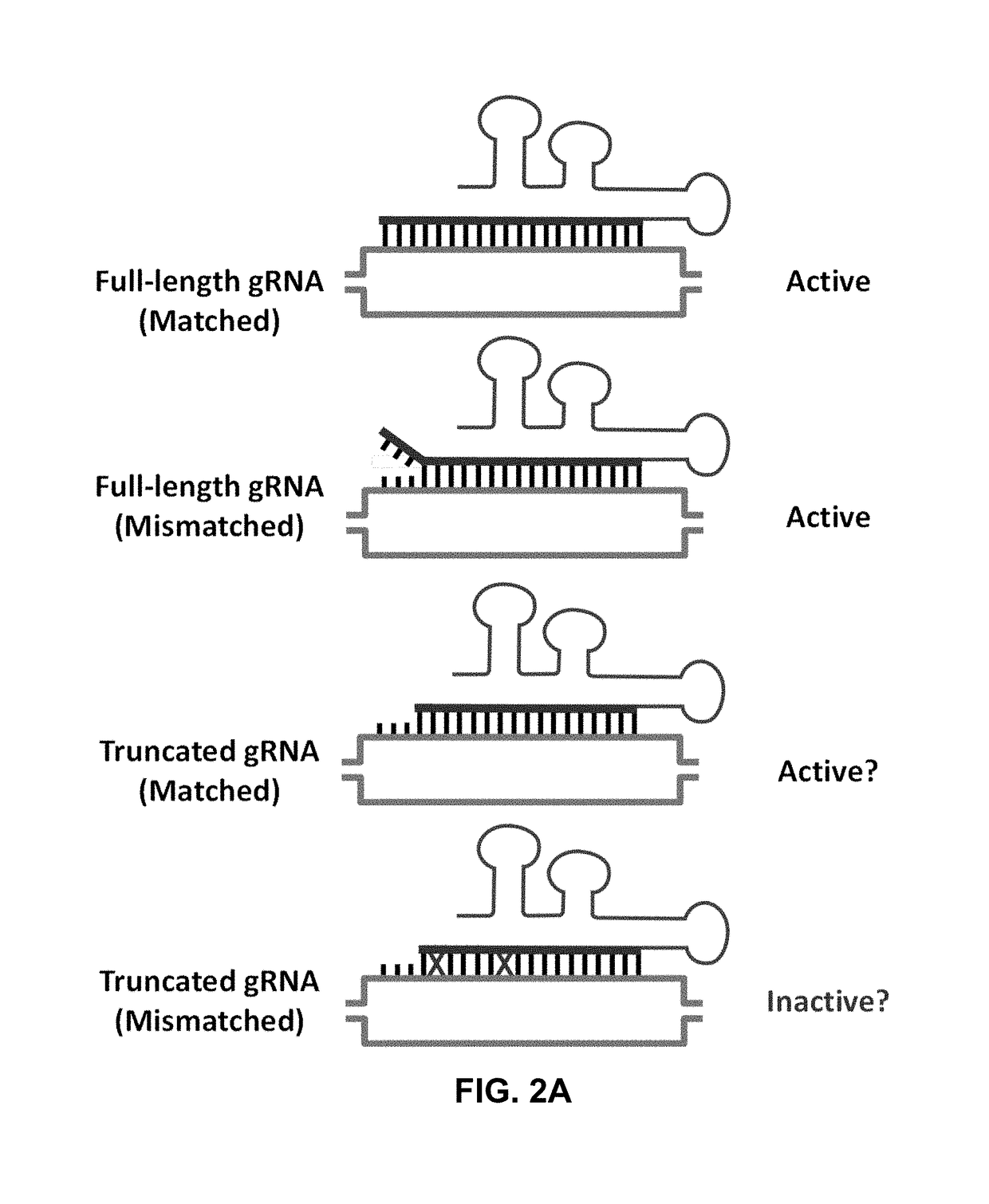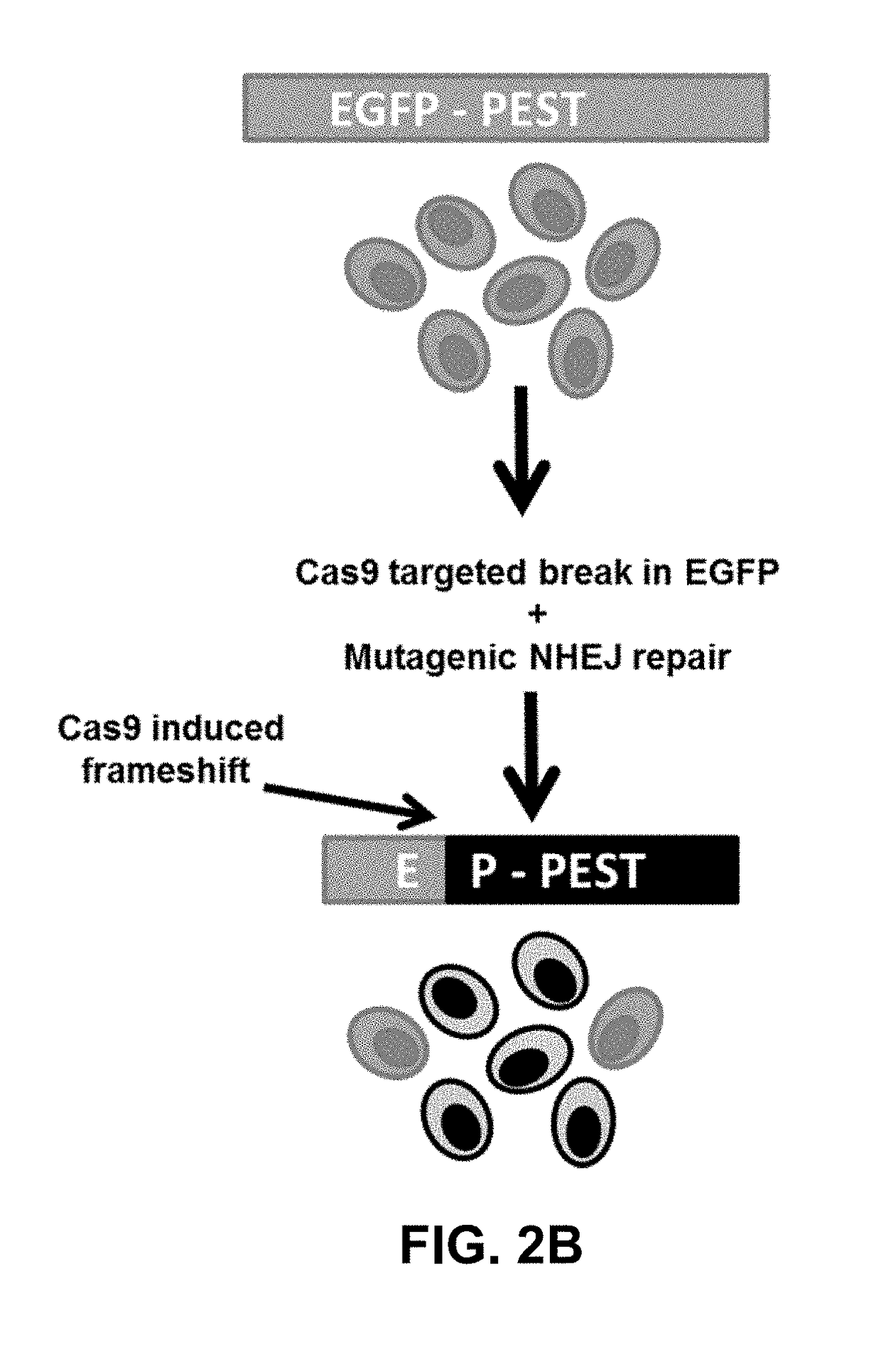Using RNA-guided FokI nucleases (RFNs) to increase specificity for RNA-guided genome editing
a technology of rna-guided foki nucleases and genome editing, which is applied in the field of increasing the specificity of rna-guided genome editing, can solve the problems of difficult to predict the effects of any given single or combination of mismatches on activity, and achieve the effect of increasing the specificity of genome editing
- Summary
- Abstract
- Description
- Claims
- Application Information
AI Technical Summary
Benefits of technology
Problems solved by technology
Method used
Image
Examples
example 1
Assessing Specificity of RNA-guided Endonucleases
[0127]CRISPR RNA-guided nucleases (RGNs) have rapidly emerged as a facile and efficient platform for genome editing. This example describes the use of a human cell-based reporter assay to characterize off-target cleavage of Cas9-based RGNs.
Materials and Methods
[0128]The following materials and methods were used in Example 1.
[0129]Construction of Guide RNAs
[0130]DNA oligonucleotides harboring variable 20 nt sequences for Cas9 targeting were annealed to generate short double-strand DNA fragments with 4 bp overhangs compatible with ligation into BsmBI-digested plasmid pMLM3636. Cloning of these annealed oligonucleotides generates plasmids encoding a chimeric+103 single-chain guide RNA with 20 variable 5′ nucleotides under expression of a U6 promoter (Hwang et al., Nat Biotechnol 31, 227-229 (2013); Mali et al., Science 339, 823-826 (2013)). pMLM3636 and the expression plasmid pJDS246 (encoding a codon optimized version of Cas9) used in t...
example 1a
Single Nucleotide Mismatches
[0139]To begin to define the specificity determinants of RGNs in human cells, a large-scale test was performed to assess the effects of systematically mismatching various positions within multiple gRNA / target DNA interfaces. To do this, a quantitative human cell-based enhanced green fluorescent protein (EGFP) disruption assay previously described (see Methods above and Reyon et al., 2012, supra) that enables rapid quantitation of targeted nuclease activities (FIG. 2B) was used. In this assay, the activities of nucleases targeted to a single integrated EGFP reporter gene can be quantified by assessing loss of fluorescence signal in human U2OS.EGFP cells caused by inactivating frameshift insertion / deletion (indel) mutations introduced by error prone non-homologous end-joining (NHEJ) repair of nuclease-induced double-stranded breaks (DSBs) (FIG. 2B). For the studies described here, three ˜100 nt single gRNAs (sgRNAs) targeted to different sequences within EG...
example 1b
Multiple Mismatches
[0143]To test the effects of more than one mismatch at the gRNA / DNA interface, a series of variant sgRNAs bearing double Watson-Crick transversion mismatches in adjacent and separated positions were created and the abilities of these sgRNAs to direct Cas9 nuclease activity were tested in human cells using the EGFP disruption assay. All three target sites generally showed greater sensitivity to double alterations in which one or both mismatches occur within the 3′ half of the gRNA targeting region. However, the magnitude of these effects exhibited site-specific variation, with target site #2 showing the greatest sensitivity to these double mismatches and target site #1 generally showing the least. To test the number of adjacent mismatches that can be tolerated, variant sgRNAs were constructed bearing increasing numbers of mismatched positions ranging from positions 19 to 15 in the 5′ end of the gRNA targeting region (where single and double mismatches appeared to b...
PUM
| Property | Measurement | Unit |
|---|---|---|
| Fraction | aaaaa | aaaaa |
| Volume | aaaaa | aaaaa |
| Volume | aaaaa | aaaaa |
Abstract
Description
Claims
Application Information
 Login to View More
Login to View More - R&D
- Intellectual Property
- Life Sciences
- Materials
- Tech Scout
- Unparalleled Data Quality
- Higher Quality Content
- 60% Fewer Hallucinations
Browse by: Latest US Patents, China's latest patents, Technical Efficacy Thesaurus, Application Domain, Technology Topic, Popular Technical Reports.
© 2025 PatSnap. All rights reserved.Legal|Privacy policy|Modern Slavery Act Transparency Statement|Sitemap|About US| Contact US: help@patsnap.com



